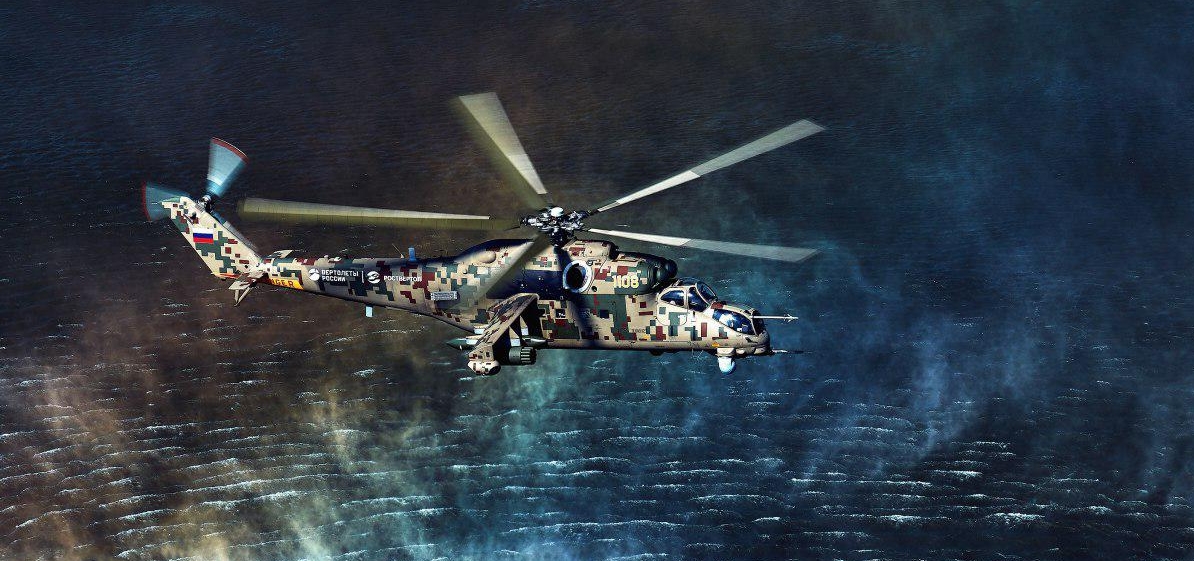 On 28th October 2020, Tupolev Tu-154M owned by Air Company ALROSA (Авиакомпания АЛРОСА) and registered as RA-85757, performed its final scheduled flight. The aircraft, carrying 140 passengers and flown by crew of Alexander Leshkevich, Nikolai Voroshilov (pilots), Igor Kontarez (navigator) and Mikhail Bogdanov (flight engineer), took-off from Mirny airport in Yakutia, and after approximately two hours of flight safely landed at Novosibirsk-Tolmachevo. Given that RA-85757 was the last Russian Tu-154 owned by an airline company, it meant the end of regular passenger service for this legendary airliner.
On 28th October 2020, Tupolev Tu-154M owned by Air Company ALROSA (Авиакомпания АЛРОСА) and registered as RA-85757, performed its final scheduled flight. The aircraft, carrying 140 passengers and flown by crew of Alexander Leshkevich, Nikolai Voroshilov (pilots), Igor Kontarez (navigator) and Mikhail Bogdanov (flight engineer), took-off from Mirny airport in Yakutia, and after approximately two hours of flight safely landed at Novosibirsk-Tolmachevo. Given that RA-85757 was the last Russian Tu-154 owned by an airline company, it meant the end of regular passenger service for this legendary airliner.
Tupolev Tu-154 – together with two other airliners, Ilyushin Il-62 and Tupolev Tu-134 – represents the second generation of the Soviet narrow-body passenger aircraft, developed and introduced into service in the late 1960s. Those three new aeroplanes were created to replace the first, pioneering jet-powered airliners and, at the same time, to cover all developing needs of national air carriers of the Eastern bloc countries.
The first jet of this second generation was Ilyushin Il-62 – a long-haul, narrow-body jet, that took-off for the first time in January 1963. At the time of its introduction, Il-62 was the first Soviet long-range airliner, one of the first long-haul jet airliners and also the biggest passenger aircraft in the world. The aircraft was initially powered by four rear-mounted Kuznetsov NK-8 engines, then replaced (starting with Il-62M variant introduced in 1973) with Soloviev D-30KU engines.
Another representative of that generation was Tupolev Tu-134, a narrow-body jet intended for short routes with low passenger traffic. This aircraft was powered by two Soloviev D-30 engines mounted in the far rear section of the fuselage and could initially carry only about 50 passengers (later increased to approximately 80 seats). Being developed from Tu-124 airliner, the Tu-134 retained its characteristic glass nose with navigator´s cockpit. The maiden flight of new short-haul aircraft took place in July 1963 and Tu-134 became operational in 1967.
While the Il-62 was intended for long-haul flights and the Tu-134 was optimised for short routes with low passenger traffic, the Tu-154 was developed to cover the most popular medium-range flights. The aeroplane succeeded both jet-powered Tupolev Tu-104 (the second jet airliner in the world, introduced in 1956 – Tupolev Tu-104A) as well as propeller-powered Antonov An-10 and Ilyushin Il-18 aircraft.
A trinity of new Soviet airliners developed in 1960s was widely used not only in the Soviet Union, but also in Eastern bloc and Arabic countries. Already in 1968, first Tu-134 aircraft were delivered to Interflug (East Germany), PLL LOT (Poland) and Malév (Hungary), shortly thereafter being operated by civilian airlines in approximately 20 countries.
Soon after commencing the operational service, Tu-134 gained an opinion of reliable and efficient airliner. It was also capable of operating from unpaved runways and, in its early variants, equipped with the drag parachute. However, it was also one of the most louder passenger jets (if even not the loudest) which caused its relatively quick withdrawal from the international routes. There were approximately 850 aircraft of this type built and, according to the Aviation Safety Network web site, 75 of Tu-134s were lost because of accidents, hijacking and war operations.
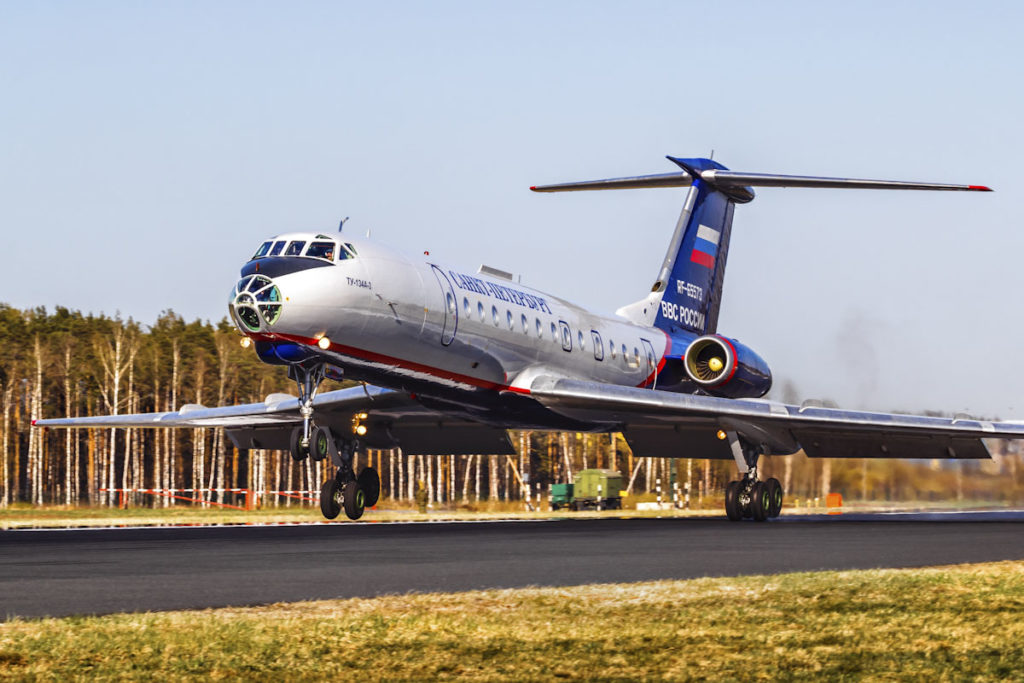
On 4th October 1968, the Tu-154 performed its maiden flight and soon the characteristic trijet silhouette of the aircraft became a very common sight at international commercial airports. As initially expected, the Tu-154 was acquired by almost forty airlines from all over the world, quickly becoming an icon of the Soviet and then Russian civil aviation.
Some sources indicate that between 1972 and 1990, the Tu-154 airliners carried half of all passengers of Aeroflot and its subsidiaries. Capable of operating from gravel runways, in extreme Arctic conditions and not requiring sophisticated airfield facilities, the Tupolev´s medium-range passenger jets were usually able to fly in the areas where other airliners could not. Moreover, the Tu-154 became also one of the most popular official aeroplanes of the Eastern bloc, used for head-of-state and VIP transportation.
The Tu-154 was announced operational on 7th February 1972 and remained in active airline service for almost five decades.
Commonly nicknamed паровоз (steam locomotive), полтинник (a 50-copecks coin) or ´Aurora´ (because of its three engines), the Tu-154 was also an extremely sturdy aircraft, designed for 45,000 hours of service life and with the possibility to increase that number up to 80,000 hours.
Taking into consideration the number of aircraft made (more than 1,000), the number of flying hours and extreme operational conditions, the Tu-154 was also, despite all rumours, one of the safest airliners in the world. There were only 110 serious accidents registered for this type and many of them were not caused by technical failures but were a result of terrorist actions, hijacking, runway conditions and human mistakes.
However, due to aforementioned fact that the Tu-154s were often used for VIP and official transport purposes, some of those accidents widely echoed across the world and caused negative opinion of that aircraft. Prime examples of such disasters were accidents from 2010 and 2016. In the first case, the Polish presidential Tu-154M jet crashed while approaching Smolensk airfield and the accident was caused by crew error when landing in heavy fog at airfield not suited for passenger airliner operations. In the latter case, sixty-four members of the famous Alexandrov Ensemble died in Tu-154B-2 crash that occurred near Sochi and also believed to be caused by a human error.
With less than 300 aircraft built, Il-62 was not so popular as two other airliners. Nevertheless, more than 80 aeroplanes of that type were exported and operated by several airlines all over the world, and a few more were used by air forces and government agencies.
At the time of its introduction, Il-62 received many positive opinions from the crews and passengers. However, after initial euphoria, this aircraft was widely criticized for heavy fuel consumption and short interval between overhauls, significantly increasing the operational costs. And although only 12 fatal accidents of Il-62 aircraft were reported until 2009, many of them were really terrible ones with many fatal casualties.

All three Soviet airliners remained in production for approximately thirty years. The Tu-134 was manufactured until 1989 and the serial production of the Tu-154 officially ceased in 1998. However, a few more aircraft were completed after that date for the Russian Ministry of Defence, with the last one, reportedly, made in 2013. Nevertheless, those airliners were made from already manufactured fuselages and spare parts, without re-launching the factory production line. And, however unbelievable, at the time this article was written, the Il-62M was still offered by the Ilyushin company, according to information presented at corporate web site.
Regrettably, this trinity of famous Soviet airliners was never replaced by another generation of aircraft, in the same way covering the market requirements, offering similar operational reliability and, last but not least, gaining a comparable popularity. Although being developed and then approved for production, the next generation not only was not able to find any customers in the former Eastern bloc countries (which almost immediately switched for Western aircraft after collapse of the Soviet Union) or enter new markets, but above all, was also poorly received by domestic operators.
Firstly, there was Ilyushin Il-86, an aircraft already developed since 1970 and originally intended to offer a new standard of passenger flights. It was the first Soviet wide-body airliner that performed its maiden flight in 1976. Initially aimed for commencing the operational service at the time of Moscow Olympics in summer of 1980, Il-86 started its commercial service in December 1980. Approximately one hundred of those airliners were built until 1991 and the collapse of the Soviet Union, but the demand for this aircraft was very low. Apart from Aeroflot, China Xinjiang Airlines was the only commercial company operating Il-86s (four aircraft between 1991 and 1993) and they were refused by PLL LOT and Interflug.
In addition, in the early 2000s several countries implemented new noise regulations for aircraft and this practically meant the end of international service for the first Soviet wide-body airliner, as the aeroplane was powered by four Kuznetsov NK-86 engines, being a modification of NK-8 introduced in early 1960s. Aeroflot retired all Il-86s until 2006 and nowadays only the Russian Aerospace Forces are still operating four Il-80 aircraft – a military command and control aeroplane developed from Il-86.
However, the project of wide-body airliner was not definitely abandoned. The initial requirements were reworked and, based on the original concept, a new, long-haul wide-body airliner was created and later designated as Il-96.
This new aircraft performed its maiden flight in 1988 and then became operational in 1993. Nevertheless, it never managed to compete with Boeing or Airbus airliners in the reality of post-Soviet world and only 30 aircraft were made until 2009, when the production was ceased. Only five aeroplanes of that type were exported and still remain in service with Cubana airline. Aeroflot withdrew them from active service in 2014 and today the government fleet is the only Russian operator of Il-96 aircraft.
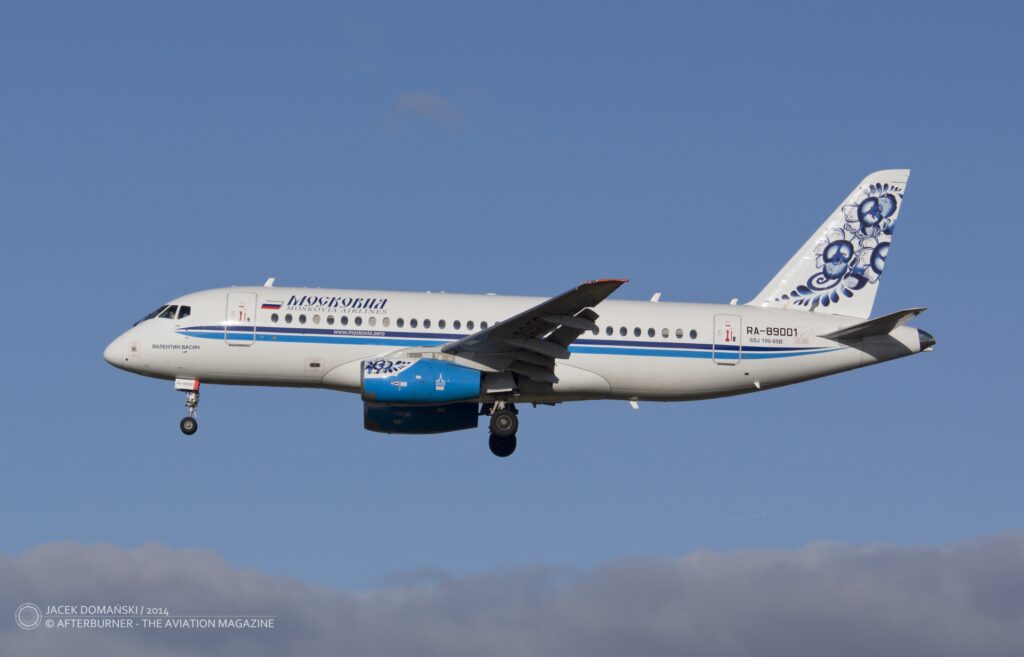
The legendary Tu-154 was intended to be replaced by another aeroplane designed at Tupolev construction bureau – a twin-engine, medium range Tu-204 / Tu-214. After its maiden flight in January 1989 it was initially considered a worthy successor of Tu-154 but shortly thereafter the new airliner designed by Tupolev shared the same sad fate of new Russian airliners.
At first, the development was slowed down by collapse of the Soviet Union, and Tu-204 performed the first scheduled passenger flight only in February 1996. Then the airliner suffered from the poor technical support, lack of spare parts and high cost of flight hour. As a result, only 86 of Tu-204/Tu-214 aircraft in all variants were built.
Despite the fact that currently the latest, deeply modernized variants of Tu-204 are equipped with modern Russian (or imported) avionics and are meeting all international standards, there is almost no demand from commercial aviation companies. Aeroflot already get rid of all Tu-204s in 2005 and currently there are less than 20 aircraft of this type still flying in commercial airlines. Therefore, the only significant customers of Tu-204 are the Russian Post and Russian MoD, progressively replacing their Tu-154 fleet with new Tupolev´s aircraft.
A sad fact is, that after collapse of the Soviet Union, Russian aviation manufacturers could not adapt to the new reality. Although offering some interesting aircraft, with the end of central-planned economy, dependent markets in the Eastern bloc countries and facing the free-market, Russian companies were not able to secure the same level of post-sale service, maintenance and customer care as their competitors. As a result, none of passenger airliners designed and developed in 1980s and 1990s followed the success of the previous generation jets.
Airlines of the former Eastern bloc countries, based on their experiences with maintenance issues and high operational cost, almost immediately switched for Western aircraft. And even worse, Russian aviation companies followed them shortly. Today Aeroflot, usually considered the national carrier in Russia and controlling over 40% of domestic market, is practically flying only with Boeing and Airbus aircraft – in the fleet of almost 250 airliners operated by Aeroflot, only about 50 are Sukhoi Superjet regional aircraft (and SSJ 100 is the only Russian-manufactured aircraft in Aeroflot service). S7 Airlines, one of the largest domestic aviation companies, now operates 103 aircraft – none of them is of Russian origin.
As a result, the already existing fleet of Il-62, Tu-134 and Tu-154 aircraft was still in service until the expiry of their certificate of airworthiness. This situation is quite similar with the issue facing by regional aviation – the fleet of still flying but already obsolete Antonov An-2 aircraft cannot be replaced with a worthy successor for a long time. Although the number of Soviet airliners in active commercial service was rapidly dropping each year, there was still more than fifty Tu-154 aircraft operating by Russian airlines in 2013.
Eventually, the abovementioned Alrosa airline – a company owned by diamond mining company of the same name – was the last one to withdraw two of legendary airliners. On 22nd May 2019, the last Russian commercial Tupolev Tu-134B-3 (RA-65693) performed its final passenger flight from Mirny to Novosibirsk, carrying 70 passengers. Then the aircraft was handed over to aviation museum located near Tolmachevo airport in Novosibirsk.
On 28th October 2020, the last civilian Tu-154M followed the same route. The aircraft will be now stored at Tolmachevo, until it will be decided about its final fate. Before you ask – the aviation exhibition at Tolmachevo already includes one Tu-154, donated by Alrosa a few years ago.
After withdrawing its last Tu-154 from active service, the fleet of Alrosa now includes six Boeing 737 medium-range airliners, two Il-76TD cargo aircraft, three An-24s and more than 20 helicopters.
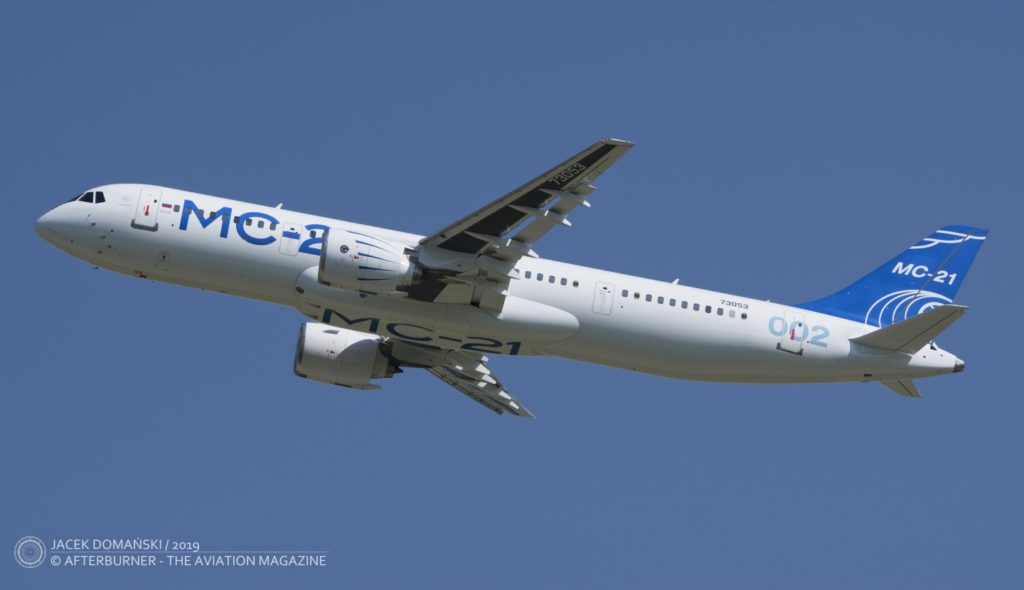
The future of Russian civil aviation, after withdrawing all Soviet airliners, is still not clear. A majority of airline companies is still based on Western jets, just a few of them decided to buy SSJ 100 regional airliner. The Russian-, or Soviet-made aircraft are usually operated just by Aerospace Forces, government agencies and state-owned companies. Until 2020s it, regrettably, seemed that the latest Russian airliners were following the same sad way as the generation introduced 30 years ago.
Sukhoi Superjet 100, regional aircraft that performed its maiden flight in 2008 and commenced the regular service in 2011, never achieved commercial success at the originally forecasted level. Although SSJ 100 was partially made with implementation of Western technologies and equipment, it is still suffering from low sales and only 172 aircraft were manufactured until today.
According to common opinion, the Sukhoi-manufactured regional jet is, unfortunately, still showing the typical teething issues of new development. As a result, a few companies already cancelled their initial orders for SSJ 100 and there is almost no demand for this aircraft at this moment. Aeroflot is the only airline still receiving new Superjets, although the deliveries are based on the long-term order from almost ten years ago. A few other orders from domestic operators are still active and open, but there is no guarantee they would not be cancelled in the near future.
And, apart from a small number of domestic airliners, Interjet from Mexico remains now the only commercial airline outside Russia still flying some SSJ 100 jets. However it was reported recently, that only 3 (or 4) of twenty two Superjets in Interjet inventory are still operationally used.
Other recent Russian developments, although interesting, still are not able to go beyond the prototype stage. Advertised as ´a mainline airliner for the 21st century´, MC-21 (МС-21) narrow-body aircraft developed at Yakovlev construction bureau and manufactured by UAC corporation, is now behind its initial development schedule. Originally, the new airliner was expected to commence operational service in 2017, now four prototypes are performing test flights to receive type certification and the rumours are that introduction of MC-21 would be postponed to 2022.
Beside the new jet airliner there is also an interesting concept of turboprop passenger aircraft, Ilyushin Il-114, that was initially designed as replacement for An-24 and its derivatives. At the beginning, this aeroplane did not achieve a commercial success. After its maiden flight performed already in 1990, only 20 aeroplanes of that type were built until today. The only commercial operator of Il-114 were Uzbekistan Airways and Vyborg Airlines, both ceasing their operation in 2018 and 2010, respectively.

Paradoxically, current sanctions against Russia – for the first time implemented by the European Union, the United States and several other countries after the Crimean crisis of 2014 – may boost the domestic aviation industry. Causing certain limitations of trading with the Western countries, those sanctions created the need of being independent from the Western technology and resources. Therefore, the Russian-manufactured aircraft currently became an interesting alternative for domestic aviation companies.
Especially that, in response to those sanctions, the newly developed aircraft were already a subject of ´russification´ – receiving Russian replacements in avionics, navigation systems, engines and other equipment. This process allows the domestic operators a new solution for the future, as they can be saved from depreciation of the rouble against other currencies and, in addition, from being dependent from spare parts delivery and maintenance service from abroad.
UAC recently reworked the MC-21 project, replacing some imported materials with Russian equivalents and testing new engines – the maiden flight of MC-21-300 powered by two PD-14 (Перспективный / Пермский Двигатель – perspective / Perm-manufactured engine) took place exactly this morning. The company is now expecting initial sales of twenty MC-21 airliners per year, with increase up to 100 within few next years.
The Ilyushin Il-114 is now becoming a completely Russian project as the aircraft recently received new Klimov turboprop engines (replacing the originally used Pratt & Whitney PW127 powerplant) and KRET avionics (instead of Collins systems). The maiden flight of ´russified´ Ilyushin is planned for tomorrow (update: and was successfully perfomed!) and its operational readiness for 2023.
And here is also a new, joint Russian-Chinese project of CR929 long-range, wide-body airliner that currently is being developed by UAC and Comac, through a joint-venture company named CRAIC. However this aircraft is currently at initial stage of development and its deliveries are expected approximately in 2029.
In conclusion, it is worth mentioning that the legendary Soviet airliners (of all three types mentioned above) are still operated by Russian Aerospace Forces, Ministry of Defence and several government agencies, as well by a few military operators in other countries – China, Kazakhstan, Syria and Ukraine. However the current number of airworthy aircraft is hard to tell, as they are successfully being withdrawn from active service. Two Il-62 in cargo variant are still used by Rada Airlines (Belarus).
And, last but not least, there is Air Koryo – a state-owned, national airline of North Korea that is still, reportedly, flying with Il-62M, Tu-134B-3, Tu-154B and even Il-18D, in this way remaining the last passenger airline operating those aircraft. However, nothing is certain with the information coming from North Korea and therefore the exact number of airworthy airliners in Air Koryo service cannot be confirmed.
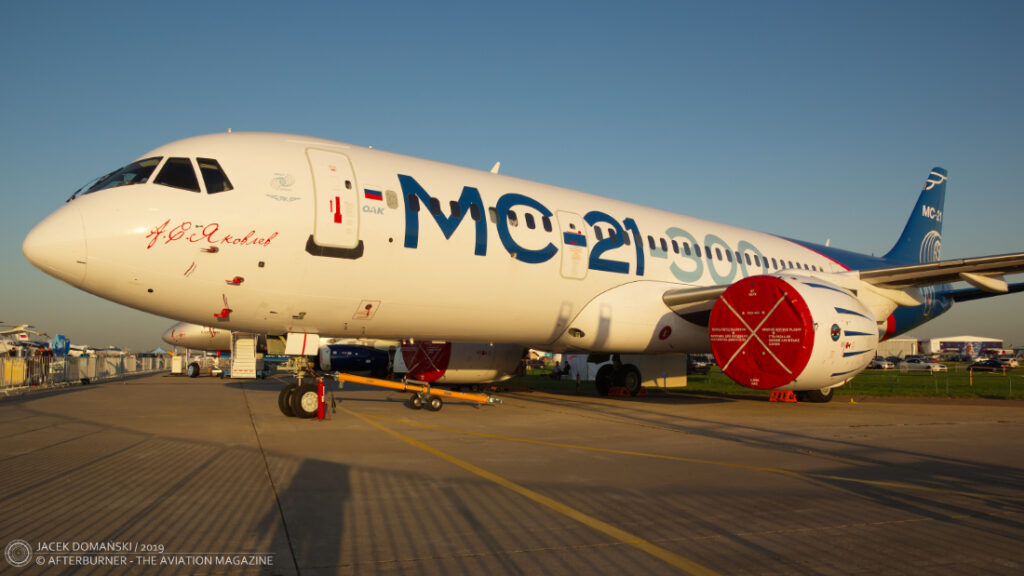
Photos of Tupolev Tu-134 © Russian MoD (Министерство обороны Российской Федерации), used under the Creative Commons Attribution 4.0 license.

